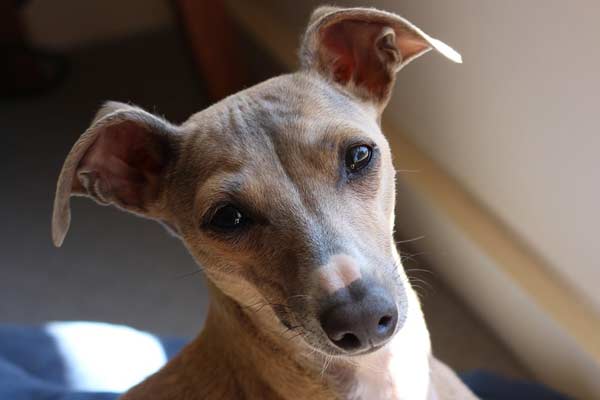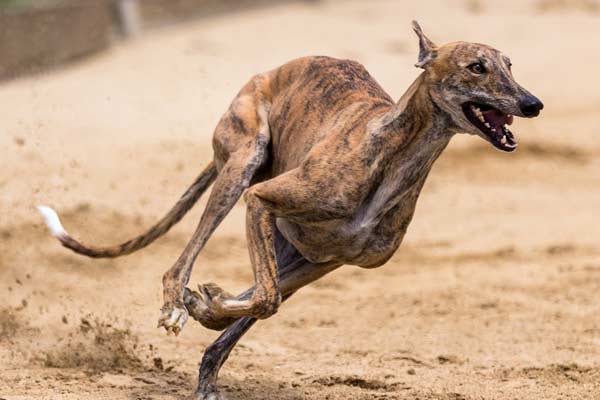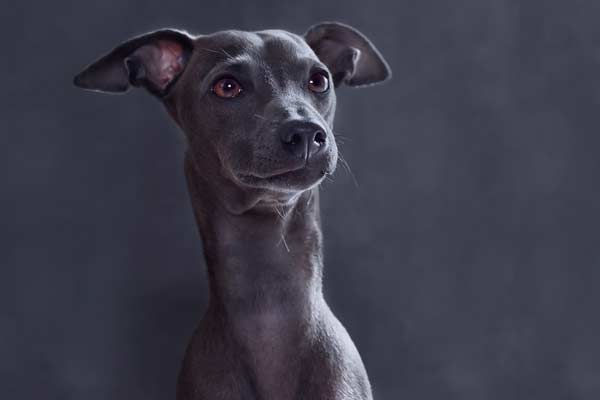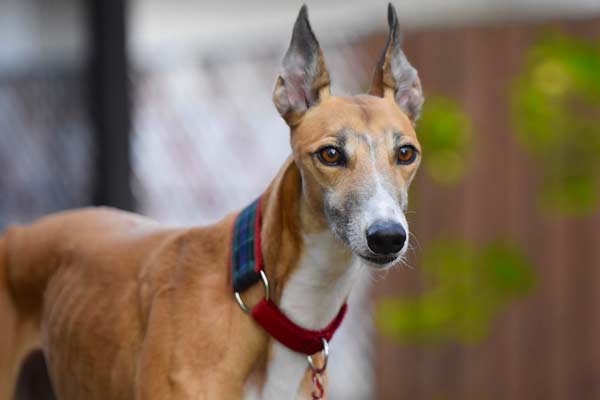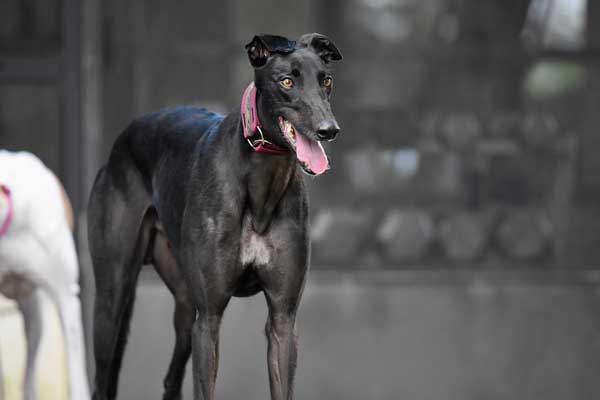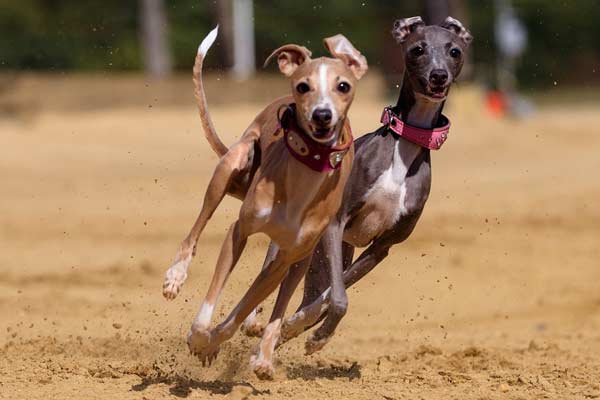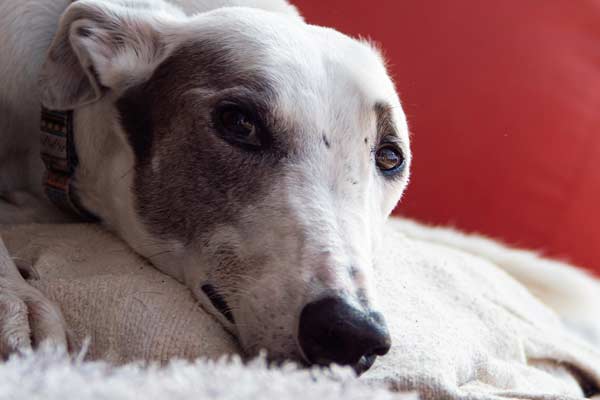Greyhound Teeth Chattering: Is It a Sign of Something Serious? Find Out Now!
Greyhounds can be very unusual dogs in many ways. One of the things that set these dogs apart is their traits seldom seen in other dogs.
However, we must also know the difference between quirky behavioral traits and behavior that indicates health issues.
What is the reason for Greyhound teeth chatter? These dogs may chatter with their teeth for many reasons, including getting your attention or having a health issue that requires attention. Knowing the cause will provide better answers to your concerns.
What Does It Look Like When Greyhound Teeth Chatter?
Greyhound teeth chatter resembles shivering more than anything else. You’ll feel vibration when patting your dog’s head, hear her teeth clicking and notice her lower jaw moving very quickly. This Greyhound quirk is very distinctive.
Although amusing to watch, the teeth chatter can say critical things about your dog’s well-being. Understanding why these dogs have teeth chatter can give you helpful perspectives into what your dog is feeling physically or mentally.
Can Greyhounds Chatter Their Teeth to Get Attention? What About Nitting
A lot of Greyhound teeth chatter behavior is because your dog wants attention. These dogs never miss an opportunity to spend time with their people.
Making sure you spend extra time with your dog if you’ve been out of the house a lot is always ideal. There is nothing wrong with quiet behavior intended to get your attention. However, disruptive or chaotic behavior is never good to tolerate.
Sometimes these dogs might chatter their teeth against your skin, a behavior known as nitting. The only problem that nitting presents is that your dog may bruise you or break the skin. This behavior may also frighten children.
Nitting may require some treat training as a way of distracting your dog. Other family members or visitors may not appreciate her display of affection.
Discouraging knitting may minimize the chances of your dog accidentally injuring someone.
Do Greyhounds Chatter Teeth Out of Excitement or Happiness?
Greyhound teeth chatter can be one of the strongest signs that your dog is excited.
If it’s playtime, you’ve just gotten home, or you’re getting ready for a walk, chattering is a way these dogs show their pleasure.
If your dog is rolling around, taking a play-bowing position, or wagging his tail, he is probably very excited.
Although there’s nothing wrong with your dog being excited in and of itself, you might need to rein in some of the behavior that comes with it.
For example, if your dog is getting too excited and jumping, walking away from her and ignoring her until she calms down is in order.
A large dog like a Greyhound can injure someone while jumping, especially children and elderly or disabled relatives.
In many cases, Greyhounds chatter their teeth as a sign of contentment. A comparison that dog owners often make is that this behavior is similar to when a cat purrs.
The body language will be positive when your Greyhound has teeth chatter from contentment. A wagging tail is one example of positive body language. Your dog may choose to show their happiness through a relaxed posture.
If your dog is calmly resting at home, perhaps snuggling with you at the time, she is more likely to chatter her teeth. Greyhounds will do this as a sign of happiness with their owner and shared bond.
Will Greyhounds’ Teeth Chatter Because They’re Hungry?
A hungry Greyhound might express their hunger through teeth chattering. If you’re late and your dog is used to eating at certain times, this is how she will try to get your attention.
Feeding your dog as soon as possible helps you maintain her feeding routine.
However, you may want to distinguish between your dog chattering because she’s hungry and sees you eating.
Your dog must understand that he received a meal because it was time to eat, not because of the chattering. Begging is something you should discourage in any dog, not just a Greyhound.
Is Your Greyhound Chattering Her Teeth Because She’s Anxious or Threatened?
Greyhounds have a high likelihood of separation anxiety issues.
These dogs should not be alone for more than six hours a day. If you work outside the house, a second dog can be perfect as a companion for your hound.
When your dog has anxiety issues, the fearful behavior may persist even after you’ve come home. Refusing to eat or hanging around in a corner is also typical.
Taking your dog on a walk and placing her in her crate before you leave helps your dog tire out and possibly sleep most of the time you’re gone.
If properly crate-trained, your dog will see the crate as a “safe space” where she will feel comfortable.
If your dog still has anxiety issues despite your taking steps to comfort her, you may want to consider a pet sitter or dog daycare. Either of these options allows your dog to receive supervision while you’re out.
Are There Medical Reasons for Greyhound Teeth Chatter?
Although Greyhound teeth chattering is usually benign and more of a behavior quirk than anything, there are sometimes health-related reasons. For one thing, your dog might be cold. Although not always the cause, being cold is common in older dogs.
Watching your dog’s behavior while sleeping can tell you if she’s cold. If you notice your hound curling up as much as possible, this is a sign that she is trying to stay warm. These large dogs can make themselves very compact when staying warm.
If your dog has some chattering going on and the temperature is cold, your pet is probably very uncomfortable. Keeping a warm shawl or blanket at hand to cover your dog will help ease her discomfort.
Keeping your dog warmer when she is older also helps minimize the symptoms of arthritis. Older dogs with arthritis can see their symptoms worsen during colder weather. Warm blankets and coats, as well as elevated dog beds, will help.
Is Teeth Chattering in Greyhounds the Result of Oral Disease?
Although Greyhounds might show abnormal jaw movement because of oral pain, this is relatively rare.
Vets will caution owners to have possible oral disease investigated. However, it is helpful to know how to tell when mouth pain is the problem.
Most of the time, dogs dealing with oral pain will have particular symptoms easily identified as being teeth or gum-related.
Some of the most obvious signs are swelling in the mouth, bleeding, and missing or broken teeth.
If your dog suddenly becomes fearful of you touching her head, she might have oral pain. Another way dogs try to protect their mouths when they have pain is by not chewing on the side of the mouth that has become affected.
Your dog might seem uninterested in eating, which is one of the most obvious signs of mouth pain.
Watching for bad breath and drooling is also helpful. You’ll want to get prompt veterinary care for your dog with any of these symptoms present.
Untreated gum disease in dogs may make the bone between the oral and nasal cavities thin. Severe gum disease in the upper canine teeth is the typical cause of these issues. Your dog may also have a runny nose and sneeze a lot.
Although most of the reasons for Greyhound teeth chatter are no cause for alarm, you’ll benefit from staying aware of what is happening with your dog at any time.
